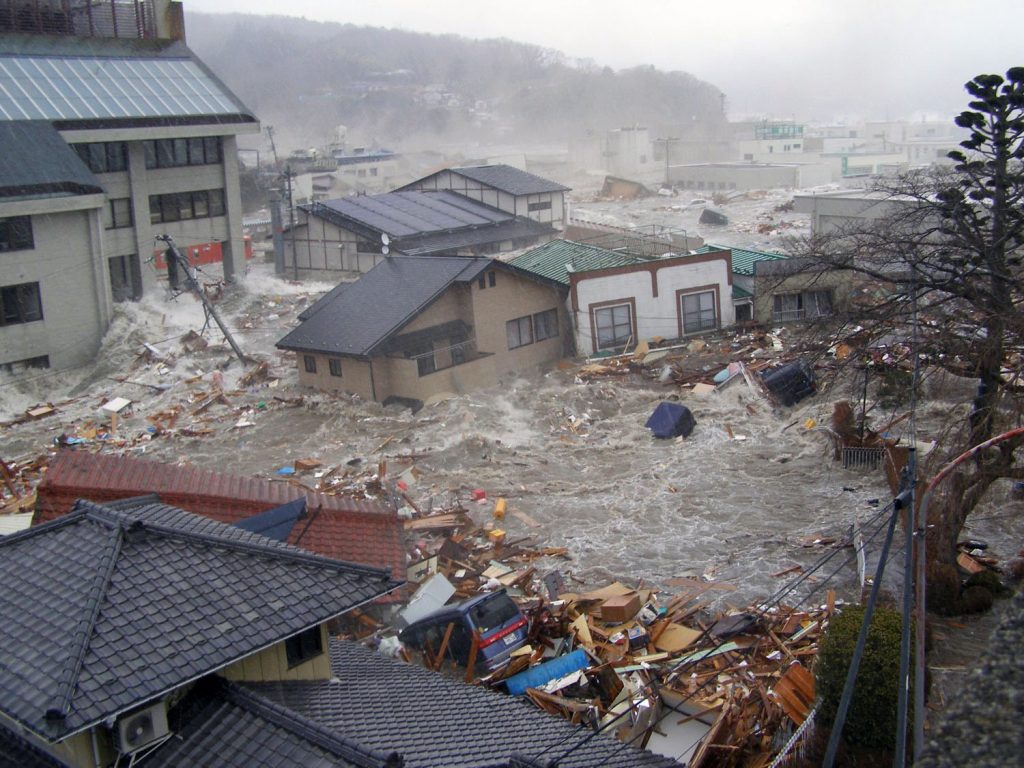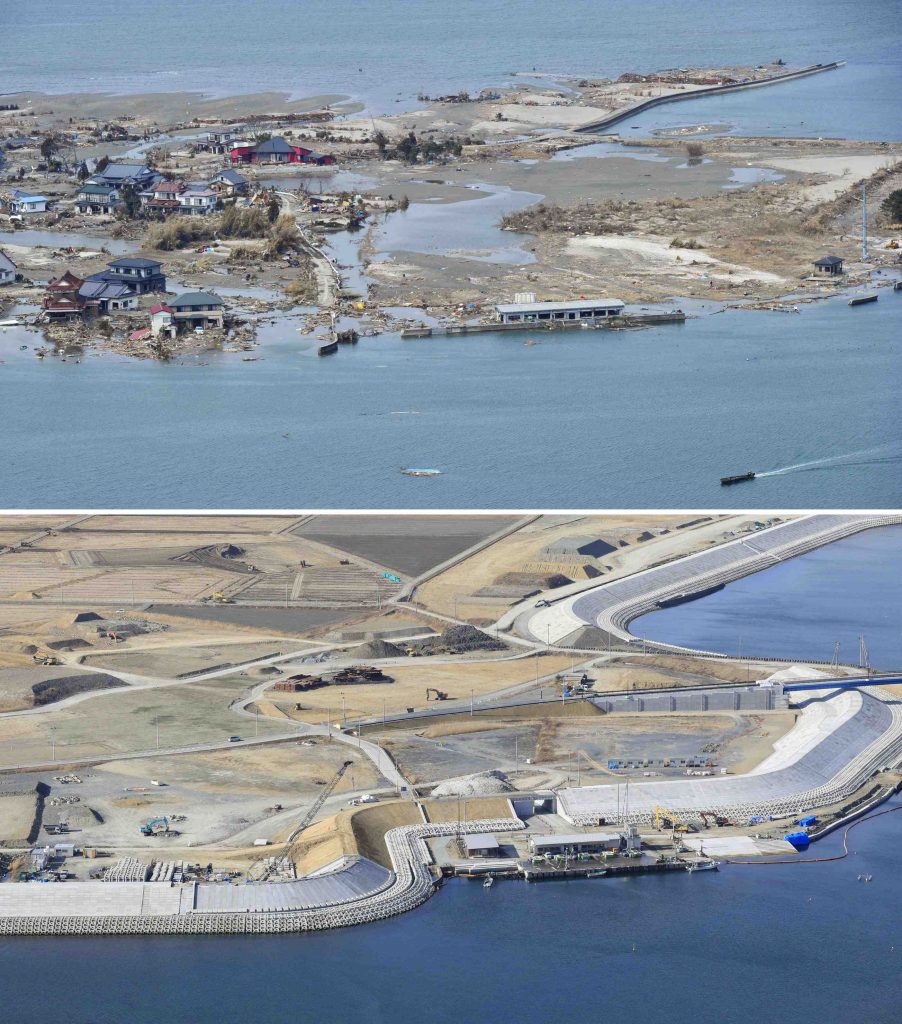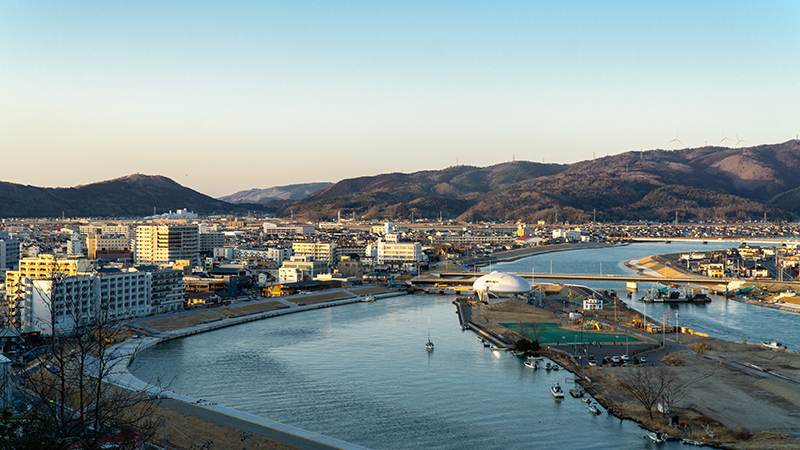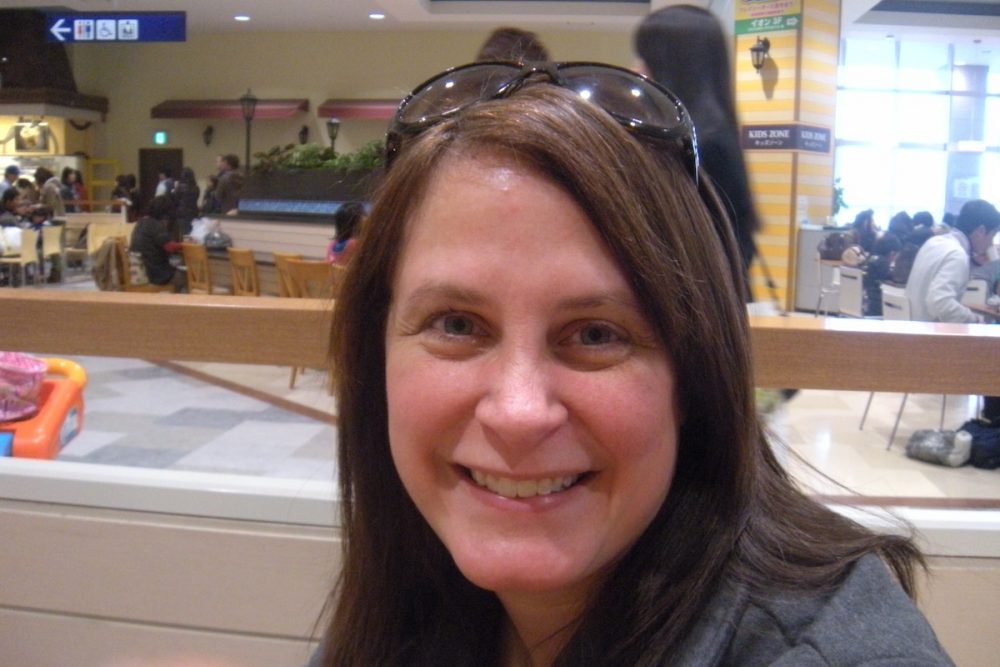INTERVIEW | The Tohoku Disaster, 12 Years on: The Briton Who Fell in Love with Ishinomaki
In the wake of the Tohoku earthquake, Richard Halberstadt chose to stay in Ishinomaki. Today, he continues to share the city's story of survival and hope.

On March 11, 2011, The most powerful earthquake ever recorded in Japan ripped through the Tohoku region. As a result of the earthquake and the ensuing tsunami, 19,729 were killed, 6,223 were injured, and 2,559 are still missing in Japan. The city of Ishinomaki in Miyagi Prefecture suffered the greatest loss of life with 2,198 deaths.
Twelve years after the earthquake, JAPAN Forward visited Ishinomaki to see how much the city had transformed. Among the landmarks we visited was the Kadonowaki Elementary School Ruins, an information center for visitors to learn about the city's reconstruction efforts.
We sat down with the center's director Richard Halberstadt, a British national who calls Ishinomaki "home." He was working in Ishinomaki as an English teacher when the earthquake struck. Despite the British Embassy's advice to return to the United Kingdom, he chose to stay and help his friends in any way he could.
Excerpts of the interview follow.
Moving to Japan
What initially drew Halberstadt to Japan was his knack for foreign languages. He learned Japanese at college, then enrolled in the Japan Exchange and Teaching (JET) program, a teaching exchange program for young foreigners.
"At the time it was the 1980s and so Japan was really economically a powerhouse then. I thought it might be good for employment opportunities," he explains.
Halberstadt was assigned to a school in Yamagata Prefecture, where he delighted in the rural environment and natural scenery. After completing his two-year contract, Halberstadt returned to England. "But I couldn't get Japan out of my mind," he recalls. So he got a teaching position at a university through a friend's referral and moved to Ishinomaki in 1993.
The Great East Japan Earthquake
"March 11, 2011, is engraved in everyone's memories here," Halberstadt says solemnly.
It was during spring break, so teachers could stay at home if they wished to. But Halberstadt decided to go to work, which he would later discover was a stroke of luck.
He says, "It's a sturdy building and there were other people around. We also had our own electric generators, which gave us some electricity despite the fact that all the power was out around."
After the disaster, Halberstadt couldn't return home because the city had been flooded. He slept on the university floor with other staff and students for two nights. Then he moved to the Ishinomaki Grand Hotel, the biggest hotel in Ishinomaki, owned by Halberstadt's good friend Mr Munenori Goto.
"So many people just fled into the hotel that he contacted City Hall and had them make it a designated shelter, which meant they got deliveries of supplies and so on," Halberstadt explains.
Mr Goto kindly told Halberstadt to stay at the hotel until he was able to return to his apartment. He finally went home at the end of May.
'Like a Post-Apocalypse Movie'
On the way to the Ishinomaki Grand Hotel, Halberstadt was hit by the immensity of the disaster.
"The city was completely devastated," he remembers. "People often use this example, but it just looked like a post-apocalypse movie … There were lots of cars literally upside down. I saw a car thrust into the window of a second-floor building."
He continues, "It really made you feel that this was the end for Ishinomaki, and there was no way that we could rebuild."
Halberstadt was overwhelmed to see his friends alive. But he stresses, "No one in Ishinomaki has not lost someone, either a family member or a friend. So we've all gone through that grief."

A Sleepless Night in Sendai
In the aftermath of the earthquake, the British Embassy advised all British nationals in Northern Japan and Tokyo to evacuate. A charter jet would take them back to the United Kingdom for free.
All of Halberstadt's friends, including Mr Goto, urged him to go back to England. But Halberstadt couldn't make up his mind: "I was thinking, my friends are in the worst time of their lives and this is not the time to just leave them to just get on with it."
After saying provisional goodbyes to his friends in Ishinomaki, Halberstadt spent a sleepless night in Sendai, wondering what to do.
Ultimately, Halberstadt decided to go back to Ishinomaki to support his friends during the worst of times. He explains, "The one thing I could do was just be with them and stand together with them."
From Friends to Family
Halberstadt is grateful for his friendship with Mr Goto, the owner of Ishinomaki Grand Hotel. "Everything that happened around the tsunami changed our relationship from really good friends to almost family," Halberstadt says, smiling.
Mr Goto has even expressed his wish to have Halberstadt interred in his family grave when he dies. "I'm worried about how all the dead ancestors are going to feel about British guys suddenly mixing up with them," Halberstadt laughs.

Rebuilding the City from Scratch
In 2014, Halberstadt left the university. Halberstadt had always wanted to change careers after spending the majority of his adult life in English language education. The experience of the tsunami gave him the nudge he needed.
"After experiencing the tsunami, I was like, if I could survive a tsunami, I'm sure I can cope with anything," he admits.
It was then that the Ishinomaki City Hall contacted Halberstadt with a unique job offer at the Ishinomaki Community and Info Center, a facility to inform and educate visitors about the ongoing reconstruction efforts across Ishinomaki. Halberstadt was eventually promoted to director.
The center closed in March 2022, but the city decided to convert the ruins of Kadonowaki Elementary School into an information center and exhibition space. The school building had been badly damaged by the tsunami, but fortunately, all the students managed to escape to a hill directly behind the school. Halberstadt was again hired as the director of the facility.
Since April 2022, the Kadonowaki Elementary School Ruins has been providing visitors with information on Ishinomaki's reconstruction efforts, as well as the importance of disaster preparedness and evacuation procedures. Halberstadt found that his experience of public speaking as a teacher and his language skills all came together.
He explains, "It's pretty close to the Pacific Ocean, about 700 m [2,300 ft] away from the coast. There are lots of other tsunami-damaged facilities around the disaster area, but I think this is the only one that actually had the fire as well."

Ishinomaki 12 Years On
According to Halberstadt, there is a wide "spectrum" of how people feel about the disaster: "You've got the people who, a couple of days after the tsunami, were already saying that we're going to rebuild the city. Full of guts and power. And there are the people who even now, twelve years afterward, are still suffering from trauma and feelings of guilt." For about five years after the disaster, Halberstadt couldn't talk about his experience without crying.
But 12 years on, he says Ishinomaki is "definitely looking a lot better." New roads and buildings have been constructed throughout the city. While reiterating that the tsunami was a tragedy, Halberstadt also claims that it "enabled the city to redevelop in a much more extreme way than it could have done if there had not been a tsunami. This was kind of an old city, with lots of old roads and old buildings, and a lot of those were wiped away. So they were able to start from nothing."
But there are signs throughout the city that the place had once been razed to the ground. Under the overgrown ruins, the outlines of buildings and houses can still be discerned. Halberstadt reflects, "Things are gradually improving, but I don't think the economic situation of the city has gotten back to pre-disaster levels. But we've got quite a way there now."

The Strength of an 'Ordinary City'
Halberstadt says that Ishinomaki is worth a visit, precisely because it is an ordinary city where visitors can see the lives of regular Japanese citizens: "Everyday life is really easy to see here."
But there are plenty of sights to see and food to taste as well. Halberstadt recommends, "If you like seafood, then this is the place to come." In fact, the Ishinomaki Fish Market is the largest in Japan and Asia. It even has the Guinness World Record for the longest fish market in the world.
The city is also famous for its natural scenery. Halberstadt says, "You've got the ocean, you've got some mountainous areas, and the whole river is really beautiful as well. So it's definitely worth a visit."
He adds that a trip to Ishinomaki will also have educational value. "You actually get the chance to see the disaster area and maybe come to where I work and see tsunami-damaged buildings and see what it was like."

Visit the Kadonowaki Elementary School Ruins
- Address: 4 Chome-3-15 Kadonowakicho, Ishinomaki, Miyagi 986-0834
- Opening hours: 9:00 to 17:00 (closed on Mondays)
- Entrance fee: ¥600 JPY
- Tablets are available for guidance in Japanese English, Mandarin, Cantonese, and Korean.
This article was first published on JAPAN Forward on March 11, 2023.
Interview by: Shaun Fernando
Additional editing and information by Miruka Adachi










